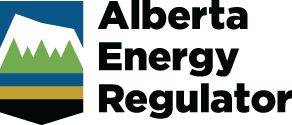On December 18, 2018, the AER issued specified enactment SED 003: Direction for Conservation and Reclamation Submissions Under an Environmental Protection and Enhancement Act Approval for Mineable Oil Sands.
The requirements for the life of mine closure plans outlined in SED 003 now supersede the conservation and reclamation aspects of “Part 2: Renewals” and “Part 3: Amendments of the Guide to Content for Energy Project Applications under EPEA.”
The overlapping guide to content application requirements will be met by submission of a life of mine closure plan in accordance with SED 003.
Albertans care deeply about how energy resource development will affect their environment and safety, and rightly so. As the sole regulator of the energy resource industry, we must ensure that our air, land, water, and biodiversity are protected through strong regulatory oversight.
The Environmental Protection and Enhancement Act (EPEA) supports and promotes the protection, enhancement, and wise use of the environment. We are responsible for reviewing EPEA applications and regulatory submissions related to energy resource development. As part of this process, we review the potential impacts of a proposed project on the environment and determine if safe development can happen.
What We Regulate Under the Act
Our EPEA responsibilities are specific to energy resource development. We are responsible for projects and activities including gas plants, in situ oil sands plants, oil sands mines, upgraders, bulk petroleum storage facilities, and coal mines. We also review air, wastewater, groundwater, soils, and decommissioning and reclamation reports associated with these projects and activities.
Our requirements ensure that public safety and environmental protection stay top of mind throughout the entire life cycle of energy resource development.
We also have a team dedicated to emergency preparedness and response, and our inspectors and investigators work hard to ensure that companies mitigate potential risks and are able to respond immediately should an incident occur.
If we find a company is not following regulations under the EPEA, we will enforce compliance through various tools.
Read our fact sheet for more information about how we regulate under the EPEA.
What We Don’t Regulate
Alberta Environment and Parks (AEP) is responsible for regulating EPEA as it relates to oil refineries, power plants, and alternative energy plants. AEP also sets policy around the province’s environment and all other sectors.
Application Process
Submit an Application
Companies must submit their application (or amendment) and associated documents by email to @email. The documents must be in PDF format. All applications must include the following:
- the type of activity
- the location, capacity, and size of the activity
- an account of any public consultation undertaken or proposed by the company
- any other requirements specified in the act, regulations, and applicable policies and guides
To assist applicants, we have supporting forms and guides for specific activities at the bottom of this page, and a Guide to Content for Energy Project Applications document. We may waive requirements that do not apply to a proposed project. Applicants can apply to amend an approval at any time.
Review Process
- We share all applications on our Public Notice of Application page to encourage public participation in the approval process.
- Anyone who believes they may be directly and adversely affected by an application can file a statement of concern (SOC). If we receive an SOC, it may take us longer to process the application.
- We will assign the application to an application coordinator for initial review.
- We will determine if the specified activity’s environmental impact is in accordance with the act and associated regulations. Our review may address design plans, site suitability, proposed monitoring programs, and methods to minimize generation, use, and release of substances.
- We may request additional information (through a supplemental information request) to complete our technical review.
- Following our review and adequate public and aboriginal consultation, we will decide to approve the application or amendment. If we approve it, we will issue an EPEA approval or amendment with conditions. If we deny it, the applicant can file an appeal through our appeal process.
- We will email the applicant to notify them of our decision, which is accessible for 30 days through the Integrated Application Registry. We will also share our decision on our Publication of Decision page.
Additional Information
Transfers, Suspensions, and Cancellations
An approval cannot be transferred without our written consent. Applications for transfer should be emailed to @email. We can add terms and conditions in the transfer of an EPEA approval to a new approval holder.
An approval may be suspended or cancelled upon request by the AER or the approval holder, or through an enforcement order.
Term Timelines
We can issue an approval for a maximum of ten years; however, we can also set a shorter term. See the Environmental Protection and Enhancement (Miscellaneous) Regulation (section 7) for details.
Security
Before undertaking activities related to mines, the applicant or approval holder may be asked to provide financial security. In the event that terms of the approval or legislation are breached by the applicant, we will be entitled to use the security to remedy the deficiencies.
Environmental Impact Assessments
Environmental impact assessments (EIAs) are built into our application process. Once a company submits an EIA report, our staff will review it to identify uncertainties or risks.
AEP maintains a registry of recent and historical environmental assessment projects.
Reporting
A number of reports must be submitted under EPEA approvals. See the following documents for more information:
- Acceptable Formats for EPEA Approval and Code of Practice Records and Submission Coordinates, Formatting Manual – Provides an overview of submission procedures.
- EPEA Approval Industrial Monitoring Documentation Submission Naming Guideline – Outlines the required file naming conventions for industrial monitoring reports.
Companies must use the following guides, forms, and other supporting information when applying for development under the Environmental Protection and Enhancement Act .
Please be aware that forms may be removed from this page as we continue to transfer application processes to OneStop.
Application Guides
Companies looking to apply should refer to the Environmental Assessment (Mandatory and Exempted Activities) Regulation to determine if an environmental impact assessment is required.
Applicants for industrial activities identified in Schedule 1, Divisions 1, 2, and 3, of the Activities Designation Regulation should refer to the following:
- Complete Industrial Approval Applications Policy [PDF]
- Guide to Content for Energy Project Applications [PDF]
Companies must thoroughly review the guide before submitting an application for approval. Applications that are complete will result in a more efficient review process.
Companies must also follow the applicable code of practice for registrations or notifications.
Forms
- Code of Practice for the Release of Hydrostatic Test Water from Hydrostatic Testing of Petroleum Liquid and Gas Pipelines – Registration under EPEA
- Code of Practice for the Temporary Diversion of Water for Hydrostatic Testing of Pipelines – For notifications under the Water Act
- Code of Practice for Compressor and Pumping Stations and Sweet Gas Processing Plants
Specified Enactment Direction
Additional Guides and Supporting Information
- Alberta Coal Mining Wastewater Guidelines [PDF]
- Alberta’s User Guide for Waste Managers [PDF]
- Best Management Practices for Pipeline Construction in Native Prairie Environments [PDF]
- Guide for Pipelines Pursuant to Environmental Protection and Enhancement Act and Regulations [PDF]
- Guidelines for Alberta Brine Storage Reservoirs [PDF]
- Hydrostatic Testing of Pipelines – Facts at Your Fingertips [PDF]
- Sulphur Recovery Guidelines for the Province of Alberta (ID 2001-03)
- Water Quality Based Effluent Limits Procedures Manual
- Alberta Ambient Air Quality Objectives
- Canadian Ambient Air Quality Standards (CAAQS)
- Air Quality Model Guideline
- Non-Routine Flaring Management: Modelling Guidance
- Air Monitoring Directive
- Continuous Emissions Monitoring System Code
- Multi-sector Air Pollutants Regulations (MSAPR) and Base-Level Industrial Emissions Requirements (BLIERS)
- Indigenous Consultation Policies and Guidelines


